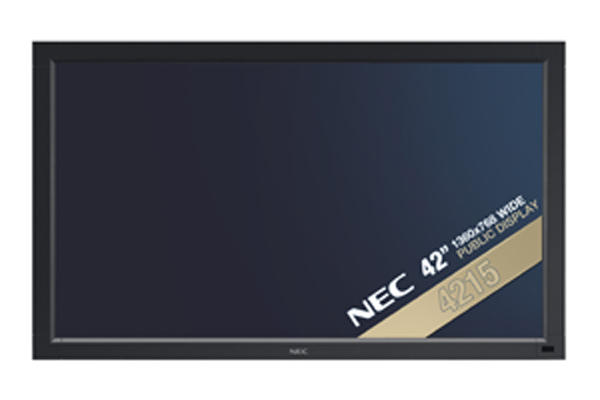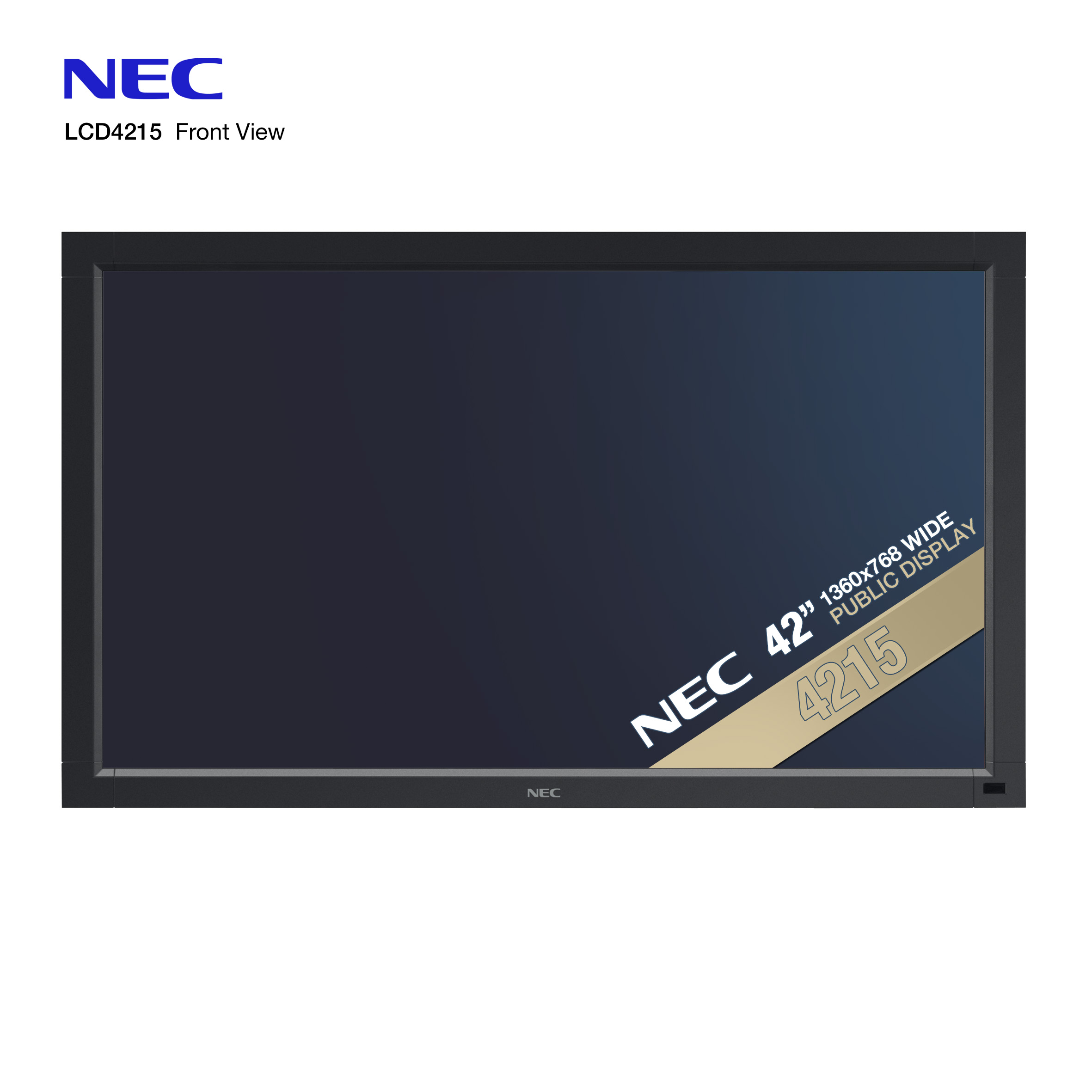NEC MultiSync LCD4215 review
NEC's MultiSync LCD4215 is a commercial grade LCD designed to offer robust performance for businesses. We take a closer look in this review to see if it lives up to its claims.

Given its ‘entry-level’ price point, the LCD4215 actually has quite a lot to offer its target market. The provision of the software editor for free is a particularly friendly touch for small businesses that don’t mind a little DIY, and the display’s connectivity and adjustments both go further than we might have expected for a sub-£800 ex VAT price point. However, a fairly marked lack of contrast in the LCD4215’s images and a limited viewing angle could persuade some users to look elsewhere. But provided you can work around its limitations, it really does offer the retail, video conferencing and corporate display markets great bang for their buck.
If you're not sure just how diverse the world of digital signage displays really is, consider this. In last month's display review, we took on the Panasonic TH-103PF10EK: a monster 103in plasma screen with a price tag in excess of 50k. Whereas today we're looking at the NEC MultiSync LCD4215: a 42in LCD screen with a price tag of comfortably under 800.
Not surprisingly, while the 103PF10EK was exclusively the reserve of the very largest, flashest corporations, advertisers or retailers (or Premiership footballers, apparently), the NEC has a much more humble target audience in mind. Its price tag and relatively modest dimensions make it a screen that a really quite small business or retailer could take on.

In fact, NEC is so aware of the LCD4215's target market that it actually developed for use with the screen a free, easily downloadable Digital Signage Software package that lets you put together your very own AV content and user-defined ticker-tape announcements, for use on up to three networked displays.
Not surprisingly given that it's free and aimed at ordinary people rather than design gurus or IT professionals, the emphasis of the Digital Signage Software is very much on ease of use rather than awesome amounts of power and flexibility. In other words, if you're hoping for something like a Digital Signage equivalent of Powerpoint or Adobe Photoshop, you can forget it. NEC's software is way more basic with its presentation options than that.
However, the simplicity thing really works, making the software genuinely accessible for people who usually run a mile at the thought of putting together any sort of presentation on a PC.
What's more, once you start to get into it, the Digital Signage Software Editor does have a few clever tricks up its sleeve. For instance, the programs you create for it can include pictures, videos, flash animations and tickers.
Plus, if you're looking for more flexibility, the package lets you access and subscribe to a web-based Channel Services system, offering additional features that you can purchase to take your presentations to another level.
The fact that you have to pay for most if not all of these extras', as NEC calls them, obviously makes the Digital Signage software suddenly look a bit less free than it did before. But to be fair, unless you're pretty skilled in IT and/or particularly ambitious about your presentations, the basic package you get for nothing should be good enough.
Get the ITPro daily newsletter
Sign up today and you will receive a free copy of our Future Focus 2025 report - the leading guidance on AI, cybersecurity and other IT challenges as per 700+ senior executives
-
 Westcon-Comstor and Vectra AI launch brace of new channel initiatives
Westcon-Comstor and Vectra AI launch brace of new channel initiativesNews Westcon-Comstor and Vectra AI have announced the launch of two new channel growth initiatives focused on the managed security service provider (MSSP) space and AWS Marketplace.
By Daniel Todd Published
-
 Third time lucky? Microsoft finally begins roll-out of controversial Recall feature
Third time lucky? Microsoft finally begins roll-out of controversial Recall featureNews The Windows Recall feature has been plagued by setbacks and backlash from security professionals
By Emma Woollacott Published
-
 The UK government wants quantum technology out of the lab and in the hands of enterprises
The UK government wants quantum technology out of the lab and in the hands of enterprisesNews The UK government has unveiled plans to invest £121 million in quantum computing projects in an effort to drive real-world applications and adoption rates.
By Emma Woollacott Published